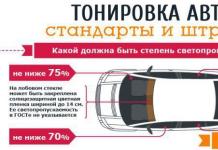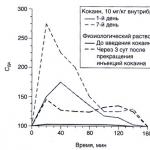Specialization: facade finishing, interior finishing, construction of summer houses, garages. Experience of an amateur gardener and gardener. We also have experience in repairing cars and motorcycles. Hobbies: playing the guitar and many other things that I don’t have time for :)
Everyone has heard about the presence of low-quality building materials on the market that are harmful to health. Therefore, the issue of choosing environmentally friendly coatings has become very relevant, in particular, many people are trying to purchase the most environmentally friendly wallpaper for their walls, but which canvases should be preferred? Next, I will try to answer the question posed and tell you which trellises are the most environmentally friendly.
What does “eco-friendly trellises” mean?
First of all, I would like to note that it is not entirely correct to talk about which wallpapers are environmentally friendly. The fact is that all wallpapers comply with certain standards and do not cause harm to health, unless, of course, they are of high quality and certified.
Therefore, the main rule when choosing environmentally friendly materials, any of them, is not to chase the price, but to purchase products from well-known manufacturers in large stores. In this case, it practically does not matter what material they are made of.

But when buying second hand, even the most seemingly safe paper trellises may turn out to be harmless.
But when most people talk about eco-friendly trellises, they mean canvases made from natural materials, and not just those that meet safety certificates. Therefore, next I want to tell you about four types of such wallpaper.

Types of eco-friendly trellises
So, we can say with confidence that the most environmentally friendly trellises, if we talk about materials, are the following:

Below we will take a closer look at all types of these trellises.
Option 1: paper
Eco-friendly, breathable paper wallpaper needs no introduction. They are well known to everyone since Soviet times. True, since then the trellises have undergone some changes:
- Modern printing technologies have made them much more attractive. Often, their decorative qualities are not inferior to more expensive analogues;

- So-called duplex trellises have appeared on sale, which are characterized by increased density and wear resistance.
The main advantage of paper trellises is their low cost. But durability, of course, leaves much to be desired. In addition, they are very afraid of moisture.
To increase the durability and moisture resistance of paper wallpaper, they can be varnished.

Option 2: non-woven
Many people question the environmental friendliness of non-woven wallpaper, but is there a reason for this? This material is made on the basis of cellulose fibers and is usually modified with polyester. In other words, it is a paper-like material.

As for polyester, i.e. synthetic components, then there is no need to worry. This material is now often used to make clothes, bedding, etc. The only thing, do not forget what I said at the beginning of the article - environmental friendliness largely depends on the quality of the wallpaper.
Non-woven fabric itself is an environmentally friendly and breathable material. Therefore, you should not avoid it.

Advantages. Among the positive qualities of non-woven coverings, we highlight several main ones:
- Strength and durability. With these properties, these trellises are significantly superior to their paper counterparts;
- Moisture resistance. Of course, the coating cannot be washed with water, but nevertheless it tolerates exposure to moisture much better than paper;

- Attractive view. As a rule, the material is deeply embossed, as a result of which it looks very interesting.

Flaws:
- Should not be used in damp areas. As I already said, linens cannot be washed, so you shouldn’t use them for bathroom walls;
- Textured surface. This leads to dust accumulation on the walls. True, not all types of this coating have deep embossing.

Option 3: fabric
Fabric trellises are an excellent solution for residential premises. They can be made of linen, silk, jute and other materials. The only thing is, if you want the coating to be truly natural, pay attention to the absence of synthetics in the composition.

Advantages. The canvases have the following positive qualities:
- Design. The trellises have an elegant appearance;
- Abrasion resistance. The surface covered with them can even be cleaned with a brush.

Flaws:
- High cost. Fabric wallpapers are more expensive than all of the above analogues;
- Instability to moisture. The fabric quickly absorbs water, so this coating is not suitable for wet rooms;

- Stains are difficult to remove. It is very difficult to remove dirt from fabric, especially fat.

Option 4: cork
If all of the above coatings require careful treatment, then bamboo eco wallpaper for walls is absolutely undemanding in terms of operating conditions. They can be used in the kitchen, bathroom or even on the balcony.

Advantages. Other advantages of the material include:
- Durability. Since the coating is not afraid of negative influences, it can last for many years;

- Heat and sound insulation properties. Cork is a soft porous material, so it can even insulate walls to some extent;
- Practicality. Cork sheets are not difficult to wash with your own hands.

The instructions for gluing bamboo wallpaper have their own characteristics. Therefore, before you begin installing them, read the recommendations from the manufacturer.
The only disadvantages include the peculiar appearance of cork panels. Therefore, they are not suitable for every interior.

Price
Finally, I will give the cost of all the above coatings:

The prices in the table are valid for winter 2017/2018.
Conclusion
We have familiarized ourselves with the popular options for eco-friendly wallpaper and their types, which will certainly help you decide on their type. Finally, watch the video in this article. And if you have any difficulties with your choice, write comments, and I will be happy to help you with advice.
December 11, 2017If you want to express gratitude, add a clarification or objection, or ask the author something - add a comment or say thank you!
Ecology of consumption. Home: In the world of modern home design, environmentally friendly wallpaper for walls occupies an important position. Now such canvases have even received a separate name “ECO wallpaper”, which reflects their environmental friendliness and safety for humans.
In the world of modern home design, eco-friendly wallpaper for walls is by no means the least important. Now such canvases have even received a separate name “ECO wallpaper”, which reflects their environmental friendliness and safety for humans. In addition, these canvases consist of natural and natural components, which reflects the desire of people to be closer to nature.
ECO wallpaper has really come into fashion, and not by chance. The search for clean and safe materials is dictated by the increasing education of people and the deterioration of the general environmental situation. Today chemistry surrounds us on all sides. It is clear that our compatriots want to add a natural, natural atmosphere to the atmosphere of their homes. Moreover, the variety of choices of environmentally friendly wallpaper is quite large.
Since the topic of ECO wallpaper is likely to arouse interest among readers, several articles will be published on the website oboi-steny.ru. There is so much information about environmentally friendly wallpaper that it is impossible to fit it into one small text. In addition, we will provide each of our articles with a lot of relevant photographs of finished works.
Characteristics and features of environmentally friendly wallpaper
First, you need to understand that the category of ECO canvases can include various finishing materials that contain natural elements. However, it is also necessary to mention here relatively natural wallpapers, which contain only a small proportion of harmless artificial components (such as paints and adhesives).
In any case, environmentally friendly canvases will have a lot of positive qualities that other types of finishing do not have. This:
1. Harmlessness. Natural natural elements do not emit harmful particles that can in any way harm a person or living creature. Often, such components, on the contrary, act as antiseptics, “healing” the atmosphere of a residential building.
2. Comfort. Natural materials of ecological wallpaper easily allow steam and air to pass through, making being in the room a natural comfort. Air exchange with such finishing of walls or ceilings does not suffer in any way; air flows move normally. This means that the room is well ventilated, ventilated, and easy to breathe.
3. Thermal insulation. The thermal insulation properties of natural materials are time-tested. Of course, the degree of thermal insulation for different ECO wallpapers will be different, but it will be there! And that's twice as good. Firstly, the heat of the room will be retained inside. Secondly, external temperatures will have a lesser impact on the atmosphere of the house.
4. Versatility. As you might guess, wallpaper for walls made from environmentally friendly materials is applicable anywhere and everywhere. This type of decoration is especially relevant in rooms where residents spend most of their time. For example, ECO wallpaper is good in bedrooms, relaxation areas, children's rooms, offices and even nurseries.
5. Durability, practicality. Certain groups of ECO fabrics are distinguished by their resistance to mechanical stress and moisture resistance. As an illustrative example, we can consider cork and bamboo canvases, consisting of dense and durable natural material. This type of finish will last you for decades, which is very profitable and practical.
Cons of eco-friendly wallpaper
Obviously, such luxury cannot be cheap. The greater the safety margin of the materials, the fewer artificial components they contain, the more exotic they are, the more significant the price will be. Among the most expensive types of finishing I would like to name:
Palm leaf;
- reed stalk;
- high-quality textiles;
- exclusive wood fiber;
- special plant fiber;
- cork sheets.

In addition, the natural elements of ECO wallpaper can absorb strong odors. For example, if you cover a kitchen with such sheets, very soon the finish will have to be changed. This is the second negative point, which can be easily blocked by the same finishing varnish or wax impregnation.
By protecting the outer surface of ECO canvas, you significantly increase their service life, but varnishes will have to be selected especially carefully! Cheap and low-quality finishing coatings can negate all the advantages of environmental wallpaper. published
Creating environmentally friendly products is the fashion of the twenty-first century. It has spread to many areas. This is how wallpaper made from natural materials appeared. There are many of them on the market, and there is a high risk of making a bad purchase.
Eco-friendly wallpaper for walls
To avoid mistakes, it is better to read in advance about the properties of the product, study the manufacturers’ markings indicating quality, and remember the elements that are unacceptable in the composition. You can learn about the intricacies of operation by reading the article.
Eco wallpaper for wall decoration: characteristics, differences
Made from natural raw materials: wood, silk, papyrus, etc. Hence their properties: safety, strength, vapor permeability, thermal insulation. More details about each characteristic:
- 1) Natural materials practically do not emit hazardous substances. Some of them kill harmful microbes, that is, they are antiseptics.
- 2) Cork, bamboo and fiberglass wallpapers are durable and moisture resistant due to the high density of the raw materials. This explains their durability, practicality, and versatility.
- 3) Paper, wood and other natural raw materials allow steam particles to pass through pore channels, which ensures air exchange. This reduces the risk of mold growing on the walls.
- 4) Natural materials - heat insulators. Eco wallpaper keeps the room warm.
Eco wallpapers differ among themselves in material (paper, wood, bamboo, papyrus, silk, non-woven fabric), complexity of the pattern, and additional applications (fireproof and other impregnations).
 You need to take your choice seriously. Purchasing a low-quality product will be a waste of money. Here are four points to guide you:
You need to take your choice seriously. Purchasing a low-quality product will be a waste of money. Here are four points to guide you:
- 1) The first is the presence of markings.
- 2) The second is a quality certificate, which also indicates the composition of the product.
- 3) Third - physical properties. A pungent smell, weak strength, which can be checked in a simple way (run your fingernail over the surface), indicate poor quality of the product.
- 4) Finally, the fourth guideline will be the price: you should not save. Otherwise, there will be even more costs in the future.
For domestic manufacturers this is “Leaf of Life” or “Eco Material”, products from Scandinavia are labeled with the “White Swan”, from Germany with the “Blue Angel”, and other countries of the European Union with the “EU Flower”, and from the USA with the “Green Sign” , from Canada - “Ecological choice”, from Japan - “Eco sign”.
Product range overview
 The market for eco-friendly wallpaper made from various materials is discussed below:
The market for eco-friendly wallpaper made from various materials is discussed below:
- 1) A wide selection of paper wallpapers from the companies As Creation (Germany), Eco Wallpaper (Sweden), MOF (Russia), etc. Breathable, but not very practical and short-lived. The ingress of water damages irrevocably, unpleasant odors are absorbed. The price varies depending on the complexity of the design: 100 - 7,000 rubles or more for a ten-meter roll.
- 2) Hypoallergenic textile wallpaper. The raw materials for them are silk, viscose, cotton and other natural fabrics, as well as synthetic interlining. In Russia they are represented by manufacturers from Sweden (White & Light, Tweed), Italy (Cristiana Pasi / Parata) and other countries. The price varies from 700-1000 rubles to 25,000.
- 3) They retain heat, provide sound insulation, and wallpaper made from plant fibers is distinguished by its durability and beauty. Can be done manually. These are expensive. But on average, the cost of floral wallpaper varies from 1,000 rubles per roll to 10,000 – 15,000. The stores feature manufacturers from China (Design Tropic, Rodeka), Italy (COSCA D’ECOLINGI) and other countries.
- 4) Hypoallergenic wallpaper with antiseptic properties made from cork, leather and fiberglass are less common in Russia.
What should not be in eco wallpaper
The composition should not include polyvinyl chloride, PVC, heavy metals, formaldehyde, water-based synthetic dyes and chlorine bleaches.
The listed materials kill the eco-component and make the product hazardous to health.
Caring for environmentally friendly wallpaper and operating features
Many natural materials absorb odors and deteriorate when exposed to water. Finish varnish coatings and wax impregnations help extend the service life.
Paper wallpapers are the most difficult to maintain. Soft feather brooms, whisks, and brushes are used for cleaning. You can use an eraser. Paper wallpaper is delicate. Dirt is removed with smooth and light movements of the eraser. Grease stains are removed with a cloth heated with an iron.
Dust-repellent impregnations are also used.
 Eco-friendly wallpaper is expensive, but its price is justified by its useful properties, durability, and practicality. They are varied in materials and their appearance is varied. Universal: used in kitchens, bedrooms, living rooms. They give the room natural harmony and pristine beauty of nature, fit into the eco-interior of a house or apartment.
Eco-friendly wallpaper is expensive, but its price is justified by its useful properties, durability, and practicality. They are varied in materials and their appearance is varied. Universal: used in kitchens, bedrooms, living rooms. They give the room natural harmony and pristine beauty of nature, fit into the eco-interior of a house or apartment.
Useful video
The task of using only natural coatings is often set during renovations in a nursery, because saving on children’s health is nonsense. But the safety of wallpaper is important when renovating any room. Before purchasing, evaluate the labeling of the roll (all technical specifications are listed on our website). The determining factor for the choice will be cost: a collection of eco-friendly wallpaper cannot cost as much as “no name” or “substandard”.

You are in no way limited in your choice of style: take a look at the photos in the interior to choose dynamic abstractions, luxurious palace ornaments or positive children's drawings. By what parameters did we select the safest coatings?
The main criteria in choosing eco-friendly wallpaper:
- Base and coating material. Most often, the base is cellulose or textile fibers, as well as chemically neutral acrylic, durable glass fiber or soft, pleasant-to-touch flock;
- Dyes used in production. American and European manufacturers separately emphasize that they do not use technologies with aggressive pigments, and confirm this with certificates;
- Recommended type of glue. It is advisable to choose cellulose-based glue - CMC or other compositions with guaranteed environmental safety. This will help the walls remain breathable.

Paper wallpaper with bright designs in a children's style or non-woven wallpaper for painting for the living room will help maintain a healthy microclimate in the apartment, free from mold and chemicals. Call us: we will select the desired decor and color for the furniture, calculate the number of rolls and glue, and also arrange fast delivery in Moscow.
In the line of wallpapers with special characteristics - fire-resistant, anti-vandal and so on, eco-friendly wallpapers occupy a special place. They are associated with the most myths, misunderstandings and even outright deception. As the demand for environmental friendliness has only increased in recent years, any manufacturer is trying to add the prefix “eco” to the name of its products.
However, in practice it turns out that the environmental indicator is not as simple as it seems at first glance. Most often, this characteristic refers to the safety of wallpaper for people, and only in some cases is it extended to further issues of disposal and safety for nature in general.
Questions are also added by the fact that the environmental friendliness of wallpaper in a roll and wallpaper pasted on the wall can vary greatly. What characteristics should a natural and safe fabric have? What wall coverings cannot harm you? Is it worth pursuing environmental friendliness, or does it have its drawbacks? Let's figure it out further.
What is eco-friendly wallpaper?
Issues of environmental friendliness of a particular finishing or building material are very subtle. Construction technologies are changing, safety requirements are increasing, people’s knowledge about their health and substances hazardous to it is increasing - and now materials previously considered safe are labeled “harmful”.

Therefore, most people give preference to long-known finishing materials and materials with a large proportion of natural ingredients. But is it worth relying on this? So, let's take it in order.
First of all, environmental friendliness means the safety of wall decoration for humans. Formally, all wallpaper officially approved for sale meets these requirements. But this does not mean that the issue can be closed. A number of important conditions must be taken into account:
- Wallpaper in a roll and wallpaper on the wall are two different units. To wallpaper on hay, glue is added, which is specialized for each type of roll finishing, and finishing (coating with paint or wax, water-repellent impregnation or other means).
- No release of harmful substances into the atmosphere of a living space;
- Ease of cleaning dirt and returning the original appearance;
- Maintaining characteristics when changing environmental conditions: temperature, light, humidity;
- There is no need for additional processing, which reduces the environmental properties of the wallpaper;
- Long service life without changing the original qualities of the material;
- Compliance with the design goals of the room, high decorative characteristics.
- Natural plant wallpaper: reed, algae, bamboo, cork
- Paper wallpaper
- Liquid and textile wallpaper
- Non-woven wallpaper
- Glass wallpaper
The environmental friendliness of the coating should not be at the expense of their decorative qualities. Plain paper rolls, unbleached and undyed, are the most environmentally friendly option. But within a year, or even earlier, they will turn yellow from exposure to sunlight, become stained from indelible dirt, and tear in places where the paws of animals or the inquisitive hands of children can reach them.
Therefore, instead of the not entirely clear “safety for people,” when choosing environmentally friendly wallpaper, you should focus on the following series of characteristics:
It is easy to notice that now the level of requirements for the environmental characteristics of wallpaper has increased significantly. Luckily, there are wallpapers that match them.
Types of eco-friendly wallpaper, their advantages and disadvantages
There is a common misconception that the simplest and cheapest wallpaper is the most environmentally friendly. This is wrong. Currently, many cheap finishing materials are produced, but they are not environmentally friendly and are often even harmful to humans. As a rule, the more expensive the material, the more environmentally friendly it is.

However, it would be wrong to focus only on price. Below we provide a list of wallpapers with high environmental characteristics, without keeping silent about their shortcomings:
Wallpaper made from natural materials is very expensive, but of high quality. This is a whole segment of roll wall coverings, which are intended for people who primarily value the naturalness and high functional characteristics of plant materials. The advantages of natural wallpaper include high heat and noise insulation, excellent decorative properties, and environmental safety of the base material.
But they also have disadvantages. As a rule, this is an elite segment of finishing materials with a very high price. Such wallpaper still requires the use of adhesives, pigments and impregnation, although of very high quality and with minimal harmful effects. Vegetable wallpaper, except cork, can also fade quickly, so it is not suitable for rooms with a high degree of illumination.
At the other price pole are paper wallpapers. Typically, they occupy the lowest price segment of all types of rolled wall coverings. The exception is eco-wallpaper with natural pigments and minimal processing of the paper base. Such wallpapers cannot be called cheap, but, unfortunately, they are the only ones capable of meeting a number of requirements for product safety.
The environmental friendliness of cheap paper wallpaper is, in many cases, a myth. The paper base of such wallpaper is fragile, so it has to be treated with various compounds to increase wear resistance. This includes treatment to improve UV resistance and lamination to improve anti-vandal properties. The pigment on the top layer of paper wallpaper is sometimes so unstable that it can be wiped off even with a dry cloth. They have the ability to absorb odors and harmful substances, such as cigarette smoke.
From all of the above, we can conclude that paper wallpaper is certainly environmentally friendly, but only in the highest price segment. In addition, you should not count on the long service life of such wallpaper, no matter what quality it is.
Liquid and textile wallpapers are based on plant fibers: linen, cotton, silk. They are durable, decorative and durable, however, their environmental qualities depend on other components: glue (for liquid) and synthetic fibers (for textiles). In general, it can be noted that such materials with natural fibers are a good choice for dry rooms with controlled humidity levels. But in rooms with high humidity they will be the basis for the spread of mold, so for damp apartments it is better to choose another option.
Non-woven wallpaper is made from pure cellulose, but its environmental friendliness must be judged by its outer coating. Often, interlining is not used in its pure form, but as a basis for a decorative vinyl layer, and this is a synthetic material, the safety of which is doubtful. Therefore, we can talk about environmentally friendly non-woven wallpaper only if it is intended for painting. Then they have all the advantages of the original material: strength, excellent gas exchange (the walls “breathe”), and the absence of substances harmful to humans. It is worth noting that the cost of such wallpaper is quite high.
Glass wallpaper is a finishing material that not only meets the highest safety requirements, but also retains its characteristics for its entire service life. In addition to being fire-resistant and damage-resistant, the glass threads that form the basis of glass wallpaper can be cleaned with almost any type of detergent. Therefore, it will be very easy to restore the original appearance if they become dirty or smoked. This is especially true for rooms such as a children's room or kitchen.

Fiberglass wallpaper does not contain organic inclusions, which so often fail textile and vegetable coatings in conditions of high humidity. They are many times superior to paper wallpaper in terms of durability and wear resistance, and non-woven wallpaper - in terms of reinforcing properties. In a word, if you had to choose an environmentally friendly champion among rolled materials, it would be glass wallpaper.
How to maintain environmental friendliness of wallpaper when pasting?
It was already said earlier that one should separate the pure environmental friendliness of a roll of wallpaper and its environmental friendliness after gluing it to the wall. In the latter case, glue, primer and paint, and sometimes wax and various impregnations, add their characteristics to the wallpaper. Additional components can significantly reduce the initial safety of wallpaper, so if the choice of wall decoration is based on safety indicators, it is worth paying attention to them.
Water-based paints are considered the best from an environmental point of view, which are recommended for residential premises, including bedrooms, as well as children's institutions - playrooms, assembly halls. But you need to choose the glue that is offered by the wall covering manufacturer.
Quite often you can come across advice to add reinforcing components to wallpaper glue. Based on this recommendation, buyers choose inexpensive glue, strengthening it with additives at home. Or just “to be sure” they are added even to the recommended adhesive compositions. This is definitely not worth doing.
Vitrulan glass wallpaper - the best choice of environmentally friendly wallpaper
Vitrulan is a leading European manufacturer of glass wallpaper, one of the world leaders in the production of fiberglass finishing materials. High requirements for the quality of raw materials and manufactured products, which undergo European certification, allow us to declare the absolute safety of glass wallpaper for humans.


Vitrulan glass wallpaper, due to its excellent quality characteristics, can improve gas exchange in rooms, reinforce walls, reduce the spread of small and large cracks, and prevent the appearance of fungus on wall structures. They can be glued to almost any wall - brick, concrete, foam blocks, drywall, etc., naturally, having first leveled and primed it.
In addition to environmental safety, Vitrulan offers a wide selection of textures, patterns, the ability to create exclusive photo wallpapers, and painting in any colors - from white and gold to red, purple and black. Divided into “economy” and “luxury” series, you can choose wall finishes of unsurpassed quality for different budgets.
Vitrulan is a glass wallpaper that allows you not to make compromises, but to choose the best wall covering in terms of beauty and functionality. Choose Vitrulan glass wallpaper to be confident in the safety of your health!
The online store "Wall" offers to buy high-quality glass wallpaper from the official dealer of the German company Vitrulan - wholesale and retail, with pleasant discounts, favorable conditions for delivery and pickup in Moscow and the Moscow region.

















